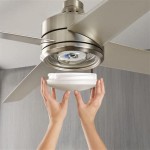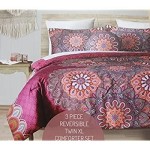Decorative Bark: Beautifying Your Garden with Nature's Charm
When it comes to creating a visually appealing garden, incorporating decorative bark can make a significant difference. These natural materials add texture, color, and depth to your landscape design, enhancing the overall beauty and functionality of your outdoor space. Whether you're looking to improve drainage, deter weeds, or create a distinct garden path, decorative bark offers versatility and aesthetic charm.
1. Types of Decorative Bark
The world of decorative bark is diverse, with various types to choose from. Each type possesses unique characteristics, making it suitable for specific purposes and settings:
- Pine Bark: Pine bark is widely popular for its rich, reddish-brown color that adds warmth and a rustic touch to landscapes. It's ideal for mulching around trees and shrubs, as it helps suppress weeds, retains moisture, and enhances soil structure.
- Cedar Bark: Known for its aromatic properties and natural resistance to decay, cedar bark is an excellent choice for garden paths, walkways, and play areas. Its fibrous texture provides stability and durability, while its pleasant scent adds an inviting ambiance.
- Fir Bark: Fir bark is characterized by its reddish-brown color with a hint of orange. It's lightweight and moisture-retentive, making it suitable for mulching and erosion control. Its unique texture also adds visual interest to garden beds and borders.
- Redwood Bark: Redwood bark is valued for its distinct reddish-brown to dark brown hue. It decomposes slowly, making it long-lasting and effective for suppressing weeds and conserving soil moisture. Redwood bark is often used in garden beds, walkways, and as a base for potted plants.
- Eucalyptus Bark: Eucalyptus bark is known for its smooth, papery texture and a range of colors, from gray to reddish-brown. It's commonly used in decorative gardening, retaining moisture, and providing excellent drainage. Eucalyptus bark can also help repel insects due to its natural oils.
2. Benefits of Using Decorative Bark
Incorporating decorative bark into your garden offers a host of benefits that enhance both the aesthetics and functionality of your outdoor space:
- Weed Suppression: Decorative bark acts as a natural weed barrier, inhibiting weed growth and reducing the need for frequent weeding. This saves time, effort, and ensures a neat and tidy garden appearance.
- Moisture Retention: Decorative bark helps retain soil moisture, reducing the need for frequent watering. This is particularly beneficial in hot and dry climates, as it helps plants thrive without excessive water consumption.
- Temperature Regulation: Decorative bark provides insulation for the soil, helping to regulate soil temperature. It keeps the soil cooler in hot weather and warmer in cold weather, creating a more favorable environment for plant growth.
- Soil Structure Improvement: Decorative bark can improve soil structure by adding organic matter and promoting beneficial microbial activity. Over time, it decomposes and releases nutrients into the soil, enriching its fertility and fostering healthy plant growth.
- Erosion Control: Decorative bark can help prevent soil erosion, especially on slopes and in areas exposed to wind or heavy rainfall. Its fibrous structure helps hold the soil in place and minimizes the risk of soil loss.
- Visual Appeal: Decorative bark adds visual interest and texture to your garden. The variety of colors, sizes, and textures available allows you to create unique and eye-catching landscape designs.
3. Decorative Bark Application
To effectively utilize decorative bark in your garden, follow these application tips:
- Preparation: Before applying decorative bark, clear the area of any weeds, debris, or existing vegetation. Till the soil lightly to create a smooth surface.
- Layering: Apply a layer of decorative bark 2-3 inches thick. For weed suppression, aim for a 3-4 inch layer. Ensure even distribution to achieve a uniform appearance.
- Watering: After applying decorative bark, water the area thoroughly to help it settle and establish contact with the soil. This also helps activate the beneficial microbial activity within the bark.
- Maintenance: Regularly inspect your decorative bark for signs of decomposition or displacement. Replenish the bark layer as needed to maintain its effectiveness and aesthetic appeal.
Conclusion
Decorative bark is a valuable addition to any garden, offering both functional and aesthetic benefits. Its natural beauty, versatility, and ease of use make it a popular choice among gardeners and landscape designers. By selecting the right type of decorative bark and applying it correctly, you can create a visually appealing, low-maintenance garden that thrives with minimal effort and showcases the beauty of nature.

Buy Woodland Mulch And Ornamental Bark

Finish Your Garden With Decorative Bark Love The

Faq What Does Bark Do When Used As A Mulch Blog Scotbark

Finish Your Garden With Decorative Bark Love The

5 Secrets About Bark Mulch Everyone Needs To Know

Maintaining Mulch Year Round Patuxent Nursery

Inverness Bark The Home Of Xxl Bags Scottish Premium Topsoil Fire Briquettes Kiln Dried Hardwood

Ornamental Stone Bark Mulch Calgary Landscape Supplies

What Are The Benefits Of Diffe Types Mulch

A Quick Guide To Bark And Wood Chippings David Domoney







